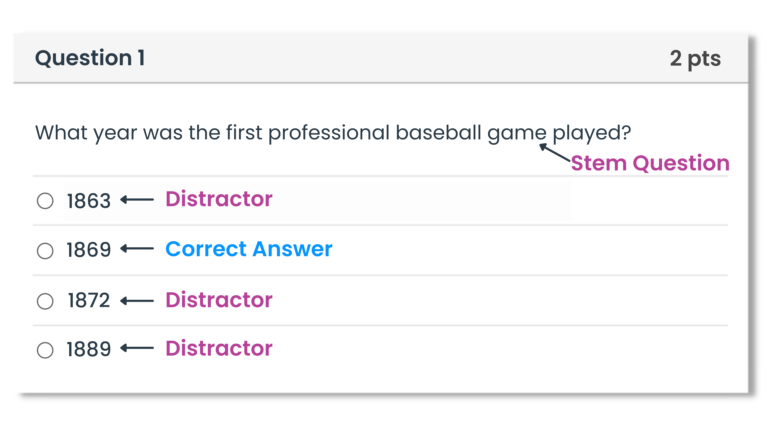
With so many types of test questions, which should you use on your online tests?
We’ll show you how to write better test questions and when to use them. Click the bullet below to skip to that section.
Multiple-choice questions are very common for online tests. They generally consist of a question with three or more answers to choose from – one is the correct answer, and the others are “distractors.”
Multiple-choice questions are extremely versatile and can be used for practically any subject and situation, such as:

Answers should be independent of one another, with no overlap.
Less Effective
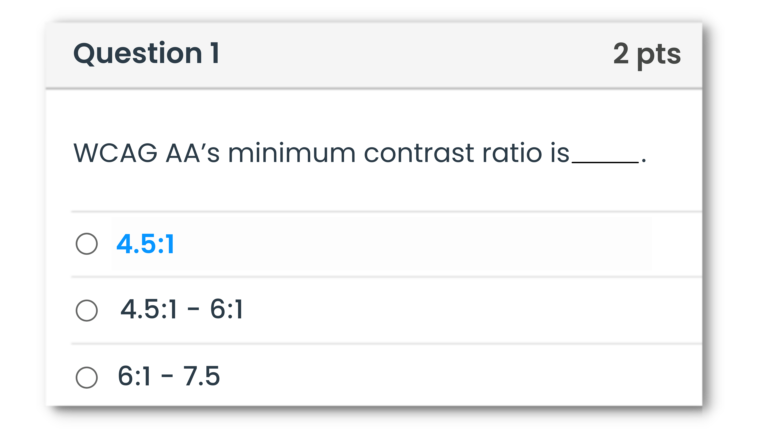

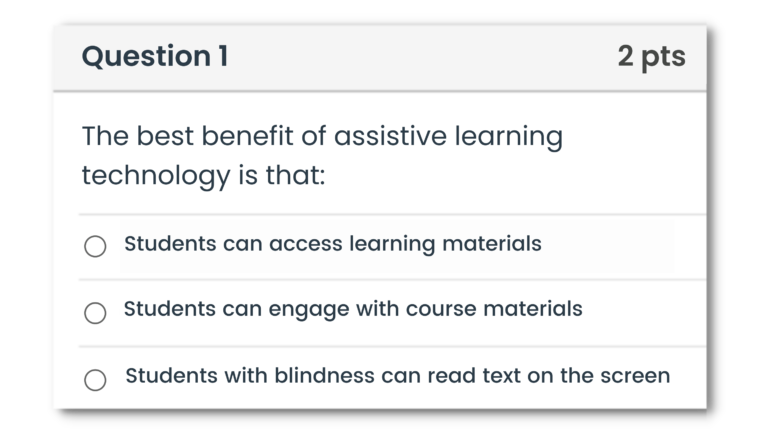
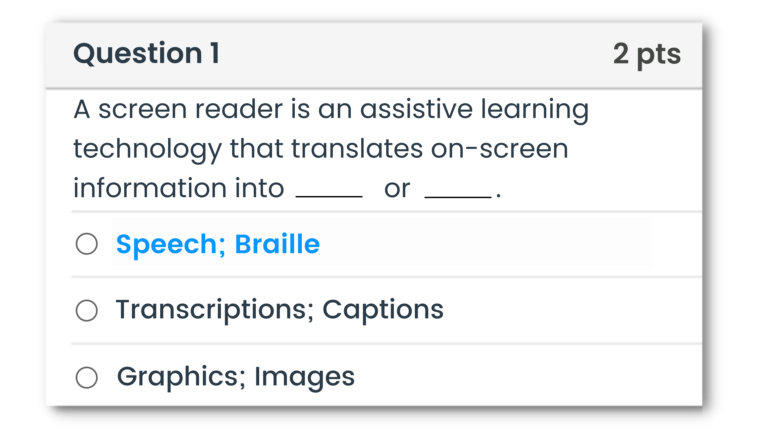
In the less effective example, the student is left with three acceptable but subjective answers to a broad question. The use of “best” is subjective. The best feature for some can be irrelevant to others.
4. One subject per question 5. Don’t give away answers with the wording or structure of the questionSmall mistakes can give away the correct answer, even with no context of the subject.
Question Format
The example above includes three lines, which gives away the answer of New York City because the other options are two words or less.
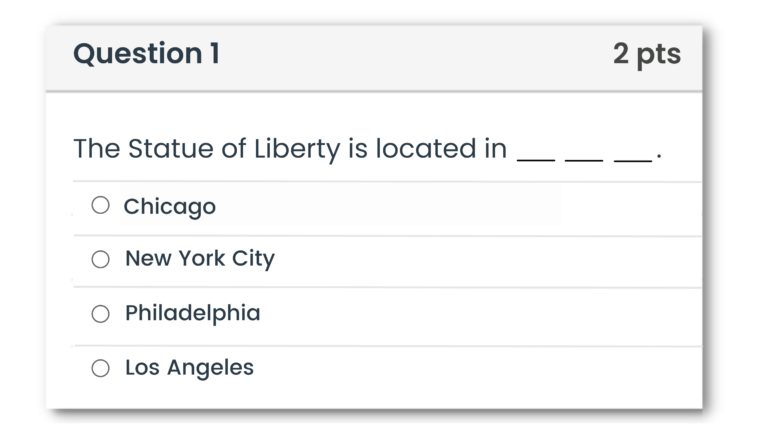
Sentence and Answer Format – Titles

Even with no context of the event or the potential attendees, you can probably guess the correct answer based on the titles before the blanks and the order of the names.
For this question, a simple way to improve it is to remove the title before the blank.
Word Format – Plural and Singular
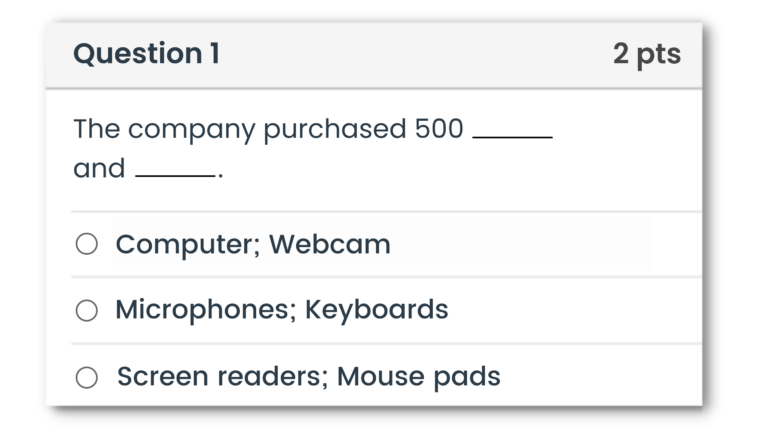
Since the company purchased 500, that inherently means that the correct answer will be plural, which excludes option A, which is written in a singular format.
Aside from using a consistent plural/singular format for each answer, you could also create answers that account for both singular and plural options:
e.g., Computer(s); Webcam(s)
True-or-false questions may seem simplistic, but when used correctly, they can effectively test in-depth understanding of information through:
However, writing true-or-false questions can be tricky because small word choices can change the meaning of a statement.
Leave no room for interpretation or subjectivity. Each statement should be explicitly true or false. Less Effective

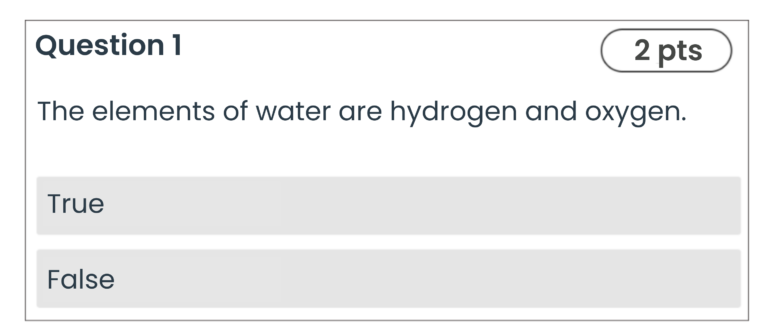
The less effective example implies that water may sometimes include elements other than hydrogen and oxygen.
Small words choices can completely change the meaning of the messageModal Verbs
Modal verbs can help describe the possibility, ability, intent, and necessity of a main verb.
Examples of modal verbs: can, may, could, should, would.
Here’s how a modal verb can change a sentence:
Running every day and having the ability to run every day are two very different things. Having the ability to run every day doesn’t mean that you do run every day.
Absolute words
Similar to modal verbs, absolute words can change the meaning of a sentence entirely.
Examples of absolute words: never, always, all, must
Here’s where you have to consider if something is absolutely 100% correct or if it’s just a general statement.
Which sentence is truly accurate?
Does the man literally never run, or is it just rare that he runs?
Note: Some sentences can include both modal and absolute words, which can cause confusion for the student.
e.g .: The man usually never goes running.
Watch for double negatives
Double negatives make a test question confusing for anyone.
Example of a double negative used in a true-or-false statement:
The less effective example is confusing, right? The first negative word in that sentence is “not” and the second negative is the prefix “un.” When you combine the two negatives, “not unhappy” is canceled out and changes to a positive.
Fill-in-the-blank test questions provide an objective way to measure true understanding of the answer rather than recognizing the answer to a multiple-choice question when they see it.
Blanks should be included toward the end of the statement instead of the beginning.
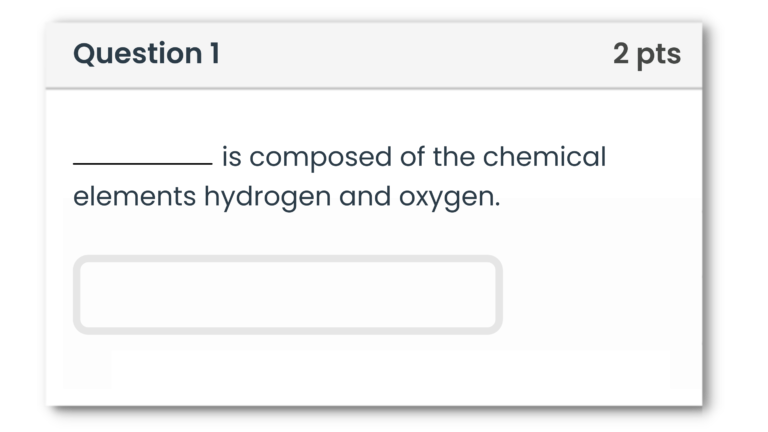

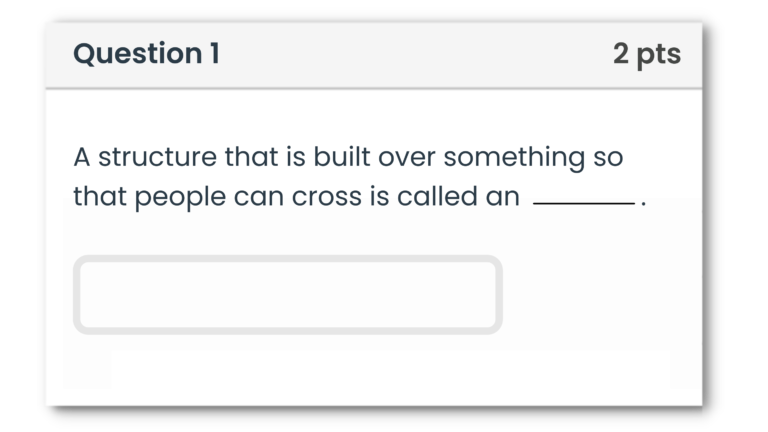
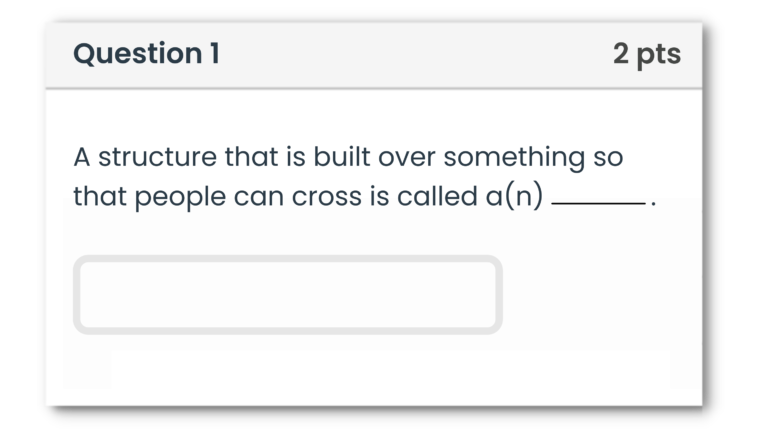
The article “an” before the blank space usually indicates that the answer starts with a vowel, which is confusing because the answer doesn’t start with a vowel. Don’t use too many blank spaces Too many blank spaces can overwhelm students and potentially lead to incorrect answers.
Written test questions can be more time-consuming to review, but they’re an effective way to allow students to expand their thoughts and tie-in other concepts.
Intentionally frame your questions based on the goal
Words to help frame the purpose of your essay question:
Use blind grading (anonymous grading)
Blind grading, sometimes called anonymous grading, can help remove grading bias because students submit their tests without a name or number. You can set this up in most modern LMSes by turning on anonymous grading at the course level. Doing so will hide the students’ names before grading and automatically distribute the test score back to them.
Instead of focusing on one
specific item for a longer written response, focus on larger topics. This approach allows students to demonstrate complex understanding by associating items across a broad range of topics.
Instead of listing four essay questions and requiring students to answer two, just provide two questions. This approach helps consistently measure student performance and ensure fairness during grading.
Good response vs poor response
Give examples of what makes a good response or poor response. What aspects should be addressed? What can make or break an answer?
Technical information
Give students context about time limits, general response length, how to get support, etc.
Detail the formatting expectations
Typed responses: Tell students what fonts should be used, which processor (Word Doc, Google Docs, etc.), what font types to use, font sizes, and line spacing.
Hand-written responses: Tell students what type of paper to use, pen color, and any other details that will help ensure that they’re on track.
Did you know you can use online proctoring for hand-written test questions?
Instructors can provide instructions to the remote proctor to allow students to use a pen and paper. You can even require that students show their work at certain intervals throughout their response.